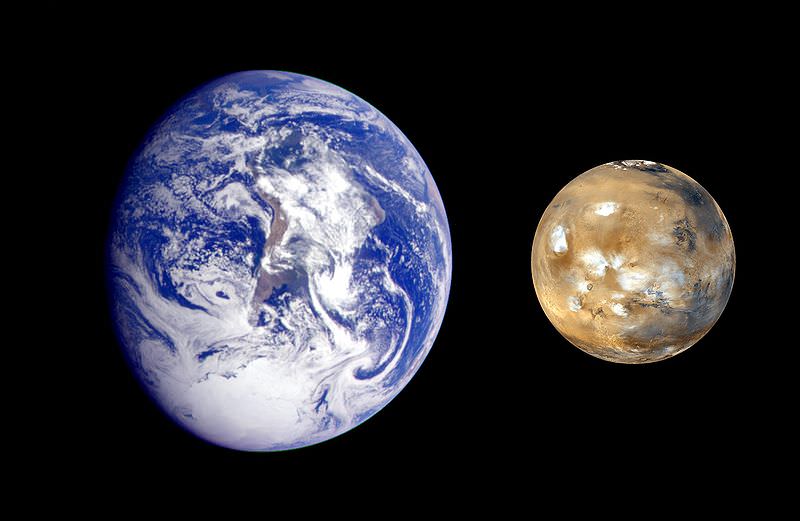Rentahamster
Rodent Whores
This is an interesting idea that I haven't seen discussed much before. One of the hurdles of how we can terraform Mars would be solving the problem of how to restart Mars' magnetosphere.
http://space.stackexchange.com/ques...e-possible-to-kick-start-marss-magnetic-field
As we know, the magnetic field of Earth deflects a lot of bad solar particles that would otherwise be quite harmful to our health. Mars' lack of a proper magnetic field is one of the causes of atmospheric stripping.
https://en.wikipedia.org/wiki/Earth's_magnetic_field#Magnetosphere
In this presentation at the Planetary Science Vision 2050 Workshop, The director of NASA's Planetary Science Division gives a presentation about how putting a big magnet in orbit around Mars could deflect enough solar particles to provide protection for Mars' atmosphere and possibly cause it to thicken.
https://livestream.com/viewnow/vision2050/videos/150701155
Presentation at 1:36:00

https://phys.org/news/2017-03-nasa-magnetic-shield-mars-atmosphere.html
The current scientific consensus is that, like Earth, Mars once had a magnetic field that protected its atmosphere. Roughly 4.2 billion years ago, this planet's magnetic field suddenly disappeared, which caused Mars' atmosphere to slowly be lost to space. Over the course of the next 500 million years, Mars went from being a warmer, wetter environment to the cold, uninhabitable place we know today.
Without this atmosphere, Mars will continue to be a cold, dry place where life cannot flourish. In addition to that, future crewed mission – which NASA hopes to mount by the 2030s – will also have to deal with some severe hazards. Foremost among these will be exposure to radiation and the danger of asphyxiation, which will pose an even greater danger to colonists (should any attempts at colonization be made).
In answer to this challenge, Dr. Jim Green – the Director of NASA's Planetary Science Division – and a panel of researchers presented an ambitious idea. In essence, they suggested that by positioning a magnetic dipole shield at the Mars L1 Lagrange Point, an artificial magnetosphere could be formed that would encompass the entire planet, thus shielding it from solar wind and radiation.
What they found was that a dipole field positioned at Mars L1 Lagrange Point would be able to counteract solar wind, such that Mars' atmosphere would achieve a new balance. At present, atmospheric loss on Mars is balanced to some degree by volcanic outpassing from Mars interior and crust. This contributes to a surface atmosphere that is about 6 mbar in air pressure (less than 1% that at sea level on Earth).
As a result, Mars atmosphere would naturally thicken over time, which lead to many new possibilities for human exploration and colonization. According to Green and his colleagues, these would include an average increase of about 4 °C (~7 °F), which would be enough to melt the carbon dioxide ice in the northern polar ice cap. This would trigger a greenhouse effect, warming the atmosphere further and causing the water ice in the polar caps to melt.
By their calculations, Green and his colleagues estimated that this could lead to 1/7th of Mars' oceans – the ones that covered it billions of years ago – to be restored. If this is beginning to sound a bit like a lecture on how to terraform Mars, it is probably because these same ideas have been raised by people who advocating that very thing. But in the meantime, these changes would facilitate human exploration between now and mid-century.
What do you think? Plausible? Unfeasible?
UPDATE: pdf supplemental reading: http://www.hou.usra.edu/meetings/V2050/pdf/8250.pdf



